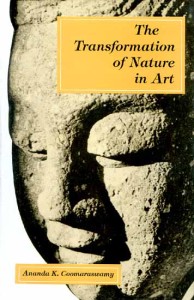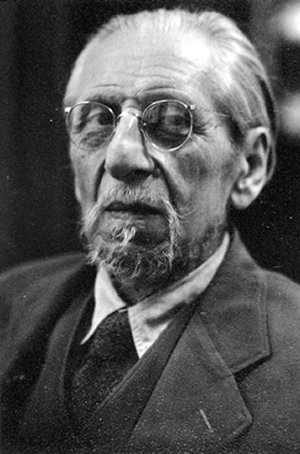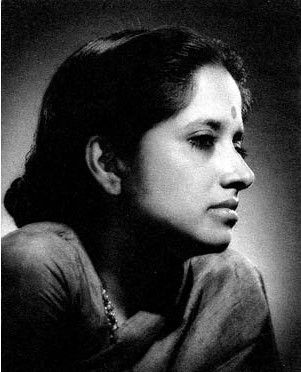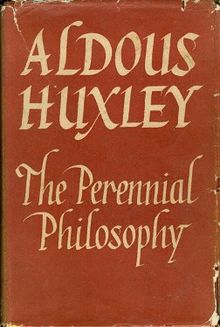[This is part of the series Opening the door into emptiness]
“To what end does one write music?” For a composer like John Cage, this was not just a question about the meaning of his work, it was a question about the meaning of his life. It is not surprising, then, that Cage would turn to sources that combined the artistic and the religious to seek out answers. The two most important of these that he described in “A composer’s confessions” were Ananda Coomaraswamy and Gita Sarabhai.
Coomaraswamy was an important historian and philosopher specializing in Indian art. He insisted upon the importance of the arts as serving a spiritual function. “Art is religion, religion art,” he stated, “not related, but the same.” He presented the work of the artist as a kind of yoga, a spiritual discipline in which he contemplates a particular divine theme or image until it becomes an immediate experience that he can transmit through his art. The artist is completely absorbed in the image and thus achieves a kind of transcendence.
In contrast to this Eastern attitude, Coomaraswamy portrayed Western art since the Renaissance as decadent and self-indulgent. He praised the art and aesthetics of the Medieval and earlier periods. He was fond of citing the sermons of the medieval Christian mystic Meister Eckhart and relating them to aesthetics. In his book The transformation of nature in art, he contrasted the divine perfection of Asian art with the merely human ego worship of the West:
To idolize one who is still a man as something more than man, to glorify rebellion and independence, as in the modern deification of genius and tolerance of the vagaries of genius, is plainly preposterous, or as Muslims would say blasphemous, for who shall presume to say that he indeed knows Brahman, or truly and completely loves God? The ultimate liberty of spontaneity is indeed conceivable only as a workless manifestation in which art and artist are perfected . . . . the way to liberty has nothing whatever in common with any willful rebellion or calculated originality; least of all has it anything to do with functional self-expression.
For Cage, who had just realized through personal experience that it was “quite hopeless to think and act impressively in public terms”, words such as these would ring true, even as they undermined his view of himself as a modern innovator. Cage’s natural view of himself as a rebellious and independent artist had been weakened by his professional disappointments. Coomaraswamy’s warnings would open him to the possibility that self-expression was at the root of his dissatisfaction.
The other source to whom Cage and his fellow seekers turned for answers was Gita Sarabhai. Sarabhai was an Indian musician who came to study in New York. She was introduced to Cage and they taught each other music from their respective traditions. But Sarabhai was much more than a fellow musician: she “came like an angel from India,” Cage said in “A composer’s confessions”. She was a source of wisdom, a strong spiritual presence.
Sarabhai’s background was as a traditional Indian musician, and hence her understanding of the role of music was very much in alignment with what Cage had read in Coomaraswamy. David Patterson cites Sarabhai’s account of her discussions with Cage:
Sarabhai had learned from her own teacher in India that music was “not the activity of the (conscious) mind but is given to one or comes to one in those spaces in time when one is willing to remain open to receive it.” She and Cage also concurred that the real purpose of music was “to integrate and center one’s personality or being, to bring it to a state of repose or tranquillity and that communication, as understood in the west, is not its true and prime function.”
This is practically a paraphrase of Coomaraswamy, again pointing to self-expression as a corruption of art. Sarabhai made the spiritual themes of Coomaraswamy’s writings personal and approachable: she was a sympathetic embodiment of Indian aesthetics, which in Coomaraswamy’s prose can at times be forbidding and even hectoring.
Cage explored other sources as well, spending a year and a half studying oriental and medieval Christian philosophy and mysticism. Sarabhai gave him a copy of The gospel of Sri Ramakrishna, a book that Cage found of tremendous importance, claiming that it “took the place of psychoanalysis.” Ramakrishna, a 19th century Indian guru, emphasized the acceptance of the world and one’s place within it, once one has realized that God is present in all of it. Cage also read Aldous Huxley’s The perennial philosophy (1945). The subject of the book, given at its outset, is “the metaphysic that recognizes a divine Reality substantial to the world of things and lives and minds; the psychology that finds in the soul something similar to, or even identical with, divine Reality; the ethic that places man’s final end in the knowledge of the immanent and transcendent Ground of all being.”
All these guides pointed to the need to find meaning in a larger, unchanging reality that goes beyond the personal sense of self. Cage knew that music, too, needed to go beyond self-expression. In “A composer’s confessions”, he summarizes Sarabhai’s understanding of music: “the purpose of music was to concentrate the mind.” He then notes that Harrison “found a passage by Thomas Mace written in England in 1676 to the effect that the purpose of music was to season and sober the mind, thus making it susceptible of divine influences, and elevating one’s affections to goodness.” Cage and his companions had found their reason for making music.
Read the next post in this series: 3 — Integrating opposites
Sources and asides
Cage may have been introduced to Coomaraswamy’s work by the artist Morris Graves, a friend from his years in Seattle who was deeply influenced by Coomaraswamy. Or he may have picked up Coomaraswamy from Joseph Campbell, who Cage knew in New York. For a thorough account of Coomaraswamy’s influence on Cage, Graves and other artists, see David J. Clarke, The influence of Oriental thought on postwar American painting and sculpture (New York: Garland Publishing, 1988). The most important of Coomaraswamy’s books for Cage was his The transformation of nature in art (New York: Dover Publications, 1934).
David W. Patterson discusses Cage’s early Asian readings in his “Cage and Asia: history and sources”, in The Cambridge companion to John Cage (Cambridge: Cambridge University Press, 2002).
Cage told the story of The gospel of Sri Ramakrishna taking the place of psychotherapy on many occasions. One such example is in his “List No. 2”, in John Cage, Kostelanetz, Ed. (New York: Praeger Publishers, 1970), p. 138. I learned of his study of Huxley’s Perennial philosophy in a telephone conversation in 1990.
The story about the similarity of Sarabhai’s formulation of the purpose of music and Thomas Mace’s was recounted often by Cage, although the facts shifted with the retelling. In later accounts of the incident, Cage ascribed the wording of the Mace quotation directly to Sarabhai, with Harrison’s finding the exact same statement in Mace given as proof of its universality. See, for example, the account in Cage’s “Memoir” of 1966, reprinted in John Cage, Richard Kostelanetz, ed. (New York: Praeger Publishers, 1970), p. 77.





Pingback: John Cage's silent piece(s): "Silent prayer", the first silent piece - James Pritchett